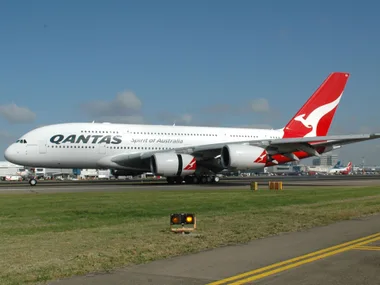You’re settling in for a nap as you jet off on a long-haul flight, but an annoying chime wakes you.
No, you’re not dreaming it. Chimes, bells and dings are common place on airplanes, and they are actually used by cabin crew and pilots to communicate secret messages with one another when they are spread out throughout the plane. So how do you decipher when someone just wants to ask for more snacks versus there being an actual concern in the cockpit?
For one, the crew won’t give it away as they are train to keep calm under pressure, but if you listen very closely you can find out exactly what’s going in – and whether you should panic or not.
In a new blog post, QANTAS lifted the lid on this secret airline morse code, which will help you decode some of the more common in-flight situations next time you fly (the HI and LO below refers to the tone of the chime):
~ On the Airbus, the ding shortly after takeoff alerts the cabin crew to the landing gear being retracted – you can probably feel this if you’re sat near it. The second ding is usually when the seat belt sign is switched off.
~ Hi single chime: A passenger in their seat calling for service from the crew – this is one we’re most familiar with.
~ HI-LO chime: The ringtone of the phone the cabin crew use to talk to each other around the plane. There is a different tone for the phone calls from the caption and from other cabin crew so listen out for the slight difference in case it’s the caption calling.
~ Triple chime LO-LO (this is one you have to look out for): Priority message from the captain or other crew members, such as upcoming turbulence meaning they should start putting away the meal carts.
So there you have it, stress less next time you hear multiple dings on board, it’s likely just other cabin crew asking for more pineapple juice up front!


